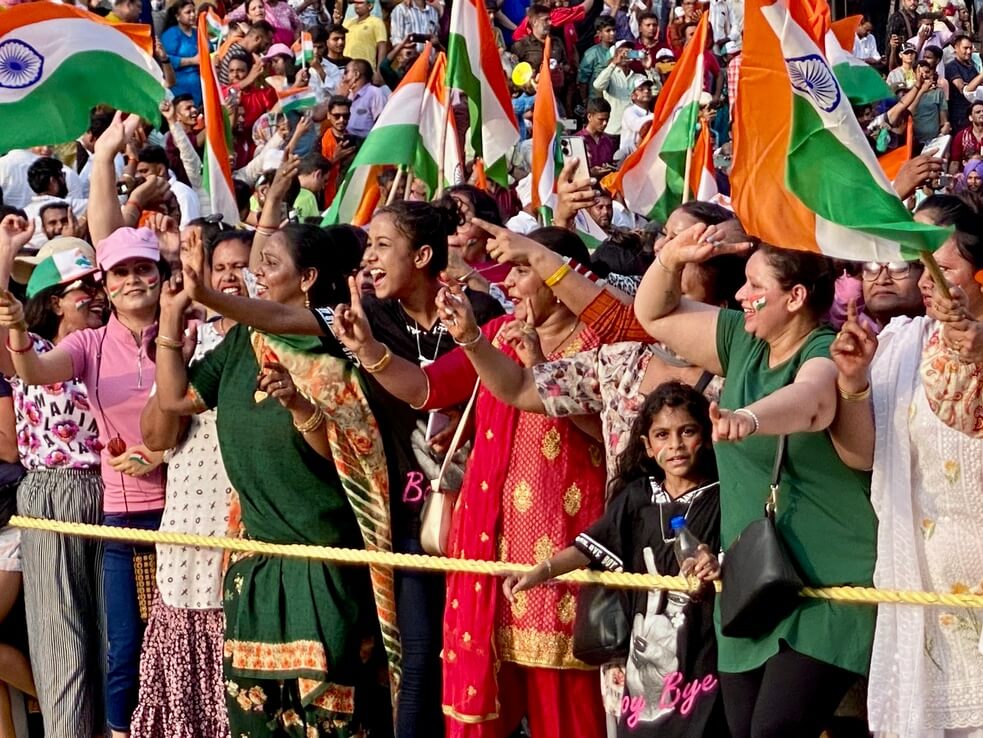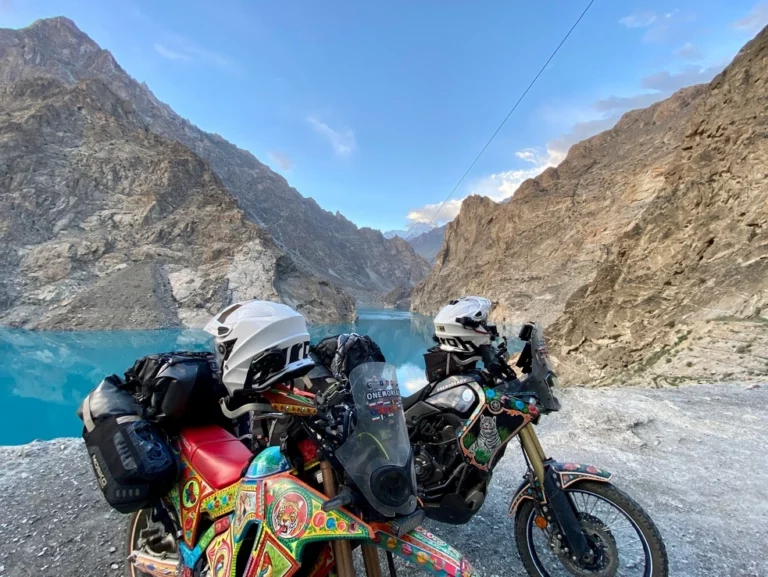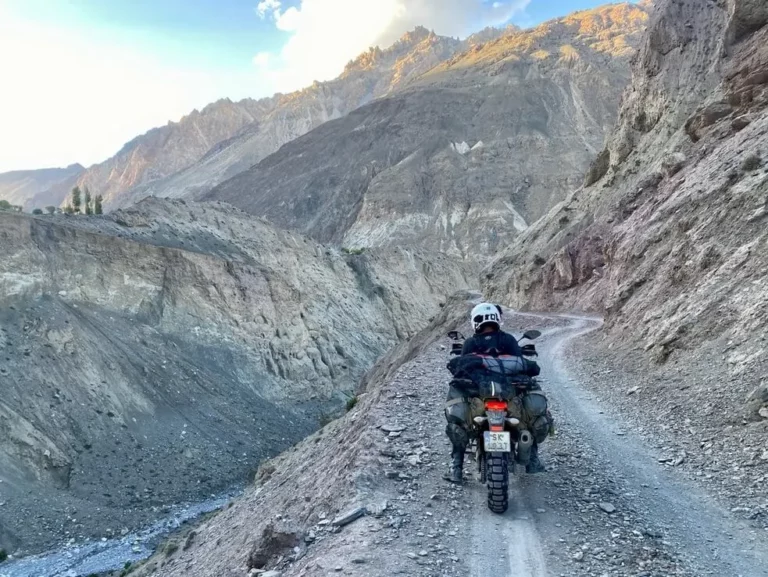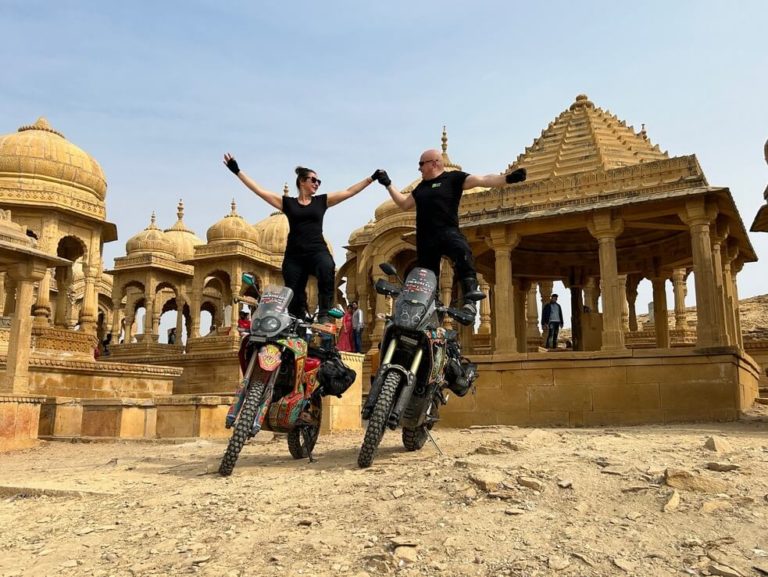Attari-Wagah border ceremony – what is it about?
On the Attari-Wagah border, the lands belonging to India and Pakistan are separated by two closed and closely guarded metal gates. There are stands on both sides that can accommodate 10,000 and 25,000 people on the Pakistan and Indian sides, respectively.

Every day, several thousand spectators gather here for so called “closing the border” or “lowering the flag” ceremony. It is an extraordinary performance, delighting with its scale and scope, as well as evoking reflections on the essence of the conflict and mutual relations between India and Pakistan. Spectators with tiranga painted on their cheeks, popcorn, and flags in their hands arrive here from 4 p.m., taking the best seats in the stands. Pre-ceremony leaders whip up patriotism towards the motherland and hostile attitude towards the neighboring country. In an obvious pantomime, they “press” the opponent into the ground with the heel, “kick” him into space, and “knock out” with their fists. The crowds cheer.
Hindustan Zindabad! – chanting can be heard on the Indian side. Pakistan Zindabad! – heard in Pakistani. Bollywood hits blare and words of patriotic propaganda pour from the speakers.

At sunset on both sides, the same thing will happen simultaneously. A handful of well-dressed soldiers enter the main field. Ironed uniforms and pomaded mustaches shine bright. They wear characteristic plumed headgear and festive white shoes on their feet. They’re about to start putting on a war show.
First, an inspection parade – the border guard commander will check the soldiers to confirm their readiness for service. Then a brisk march with legs swinging above their heads. It’s a show of fitness and strength. The soldiers take up subsequent positions and in several iterations approach the open gates of the border. Every gesture is exaggerated.

Pakistan Rangers and Indian Border Security Forces face each other. They exchange sinister glances, shake their fists, and make stern faces so that no one has any doubts about who is on top, who is better and who is about to “eat” whom. Then they energetically lower their national flags, shake hands and march away. The gate closes with a clang and the audience rushes to the exit. This time tomorrow, the same thing will happen here.
How did the Attari-Wagah border closing ceremony come about?
Officially, India does not like Pakistan. The roots of hostility go back to the times of the British Crown, when the lands of both countries belonged to one geopolitical entity. The British administration, using the “divide and rule” policy, created social divisions around everything – especially around religious affiliation. Ultimately, the Crown, abandoning its colonies in 1947, had to divide the subcontinent between Muslims – demanding their own state based on religion, and not Muslims led by Gandhi, striving to create one multicultural state. The partition of India deepened the social divide, as the arbitrarily drawn line placed millions on the “wrong side” and were, in a sense, forced to migrate. Hundreds of thousands of families have suffered historical injustice, and time hardly erases the painful memories. Conflict over disputed territories, such as Kashmir, continues to smolder to this day.
Soon after the partition of British India, border buildings, barriers and gates were constructed. The ceremony began to be celebrated shortly thereafter. It was intended to be an expression of military power and a tool for strengthening patriotism in the emerging states.

The armies of Pakistan and India were derived from earlier British military organizations, or formations subordinate to local rajas, but also under English authority. The British army has a number of show rituals that could be used here to create a spectacular ceremony. It is not known on whose initiative and exactly how the scenario of the event was shaped, but the 18th century beating retreat ceremony was used to create it.
Beating retreat is a ritual of ending a war day before sunset. In those days, fighting did not take place at night. So at dusk, drum beating called on the soldiers to stop fighting, secure their positions and prepare for rest. Flags were lowered during the suspension of fighting, demonstrating to the other side the strength of their army and certainty of victory. All accompanied by drumming and loud commanding.

The reflections are obvious – these are people who once lived in harmony with each other. Affected by colonialism and quarreled by foreigners, finally they borrowed the ceremony from their invaders. By that and with elements of hatred towards a brotherly country, they want to build national pride and patriotic attitudes.
Additionally, for the entire event to be successful, Pakistani Rangers and Border Security Forces had to prepare this ceremony together. It’s bitter and weird, isn’t it?
How to attend the Wagah border closing ceremony?
From the Indian side, the base for trips to the ceremony is Amritsar – 27 km from the border. From here, taxis and rickshaws gather at the exit of Golden Temple and take viewers to the border parking lot at a fixed price (in August 2023, a round trip for one person cost 300 rupees). To be on time, catch a rickshaw or taxi no later than 3 p.m. in summer (2 p.m. in winter) and be prepared for 45 minutes of moderate discomfort.
Public transport (taxis and rickshaws) takes spectators to a parking lot about 1.5 km from the border. The remaining distance must be covered on foot. As soon as you exit the vehicle, you will be greeted by Indian flag sellers. Somebody will definitely want to decorate your cheeks with three flag colors or put a patriotic baseball cap on your head. As you walk towards the border, stock up on water and snacks. You’ll find plenty of them along the road.
There are multiple entrances to the ceremony and at least 2 security checks. Please remember that large bags, backpacks and large tripods are not allowed into the stands. Foreigners are asked to show their passport and are directed to the VIP section, which offers excellent views of the ceremony and the gate itself.
The ceremony itself starts at 5:15 a.m. in summer and around 4:30 a.m. in winter, but is preceded by a number of attractions, such as dancing to Bollywood music, running with flags, etc. Observing these attractions and the chanting crowd is an integral part of this experience.
Admission is free. If you can, avoid weekends because they are extremely crowded.





